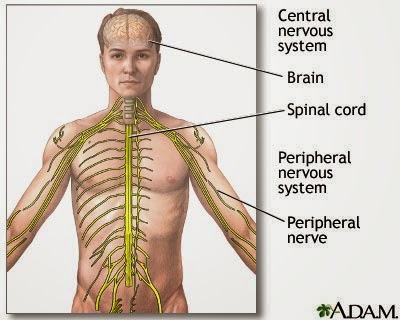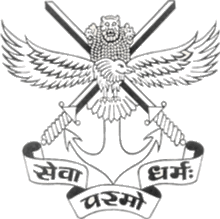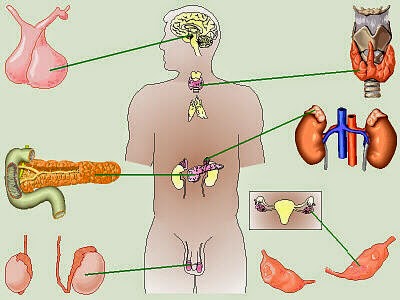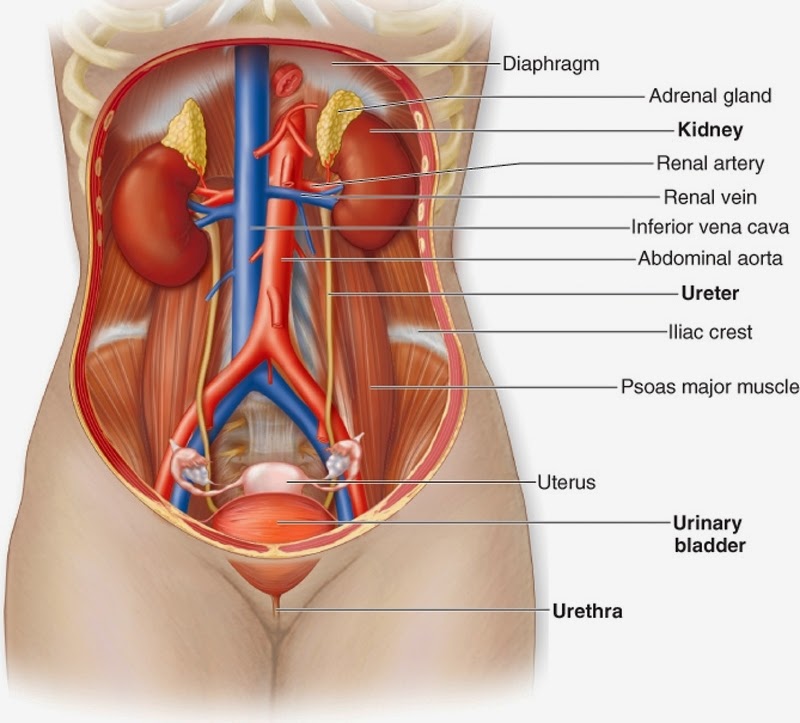NERVOUS SYSTEM

HUMAN DIET




NATIONAL DEFENCE ACADEMY AND NAVAL ACADEMY EXAMINATION Syllabus
Paper I MATHEMATICS
1. Algebra
Concept of a set, operations on sets, Venn diagrams. De Morgan laws. Cartesian product, relation, equivalence relation.
Representation of real numbers on a line. Complex numbers – basic properties, modulus, argument, cube roots of unity. Binary system of numbers. Conversion of a number in decimal system to binary system and vice-versa. Arithmetic, Geometric and Harmonic progressions. Quadratic equations with real coefficients. Solution of linear inequations of two variables by graphs. Permutation and Combination. Binomial theorem and its application. Logarithms and their applications.
2.Matrices and Determinants
Types of matrices, operations on matrices Determinant of a matrix, basic properties of determinant. Adjoint and inverse of a square matrix, Applications – Solution of a system of linear equations in two or three unknowns by Cramers rule and by Matrix Method.
3.Trigonometry
Angles and their measures in degrees and in radians. Trigonometrical ratios. Trigonometric identities Sum and difference formulae. Multiple and Sub-multiple angles. Inverse trigonometric functions. Applications – Height and distance, properties of triangles.
4.Analytical Geometry of two and three dimensions
Rectangular Cartesian Coordinate system. Distance formula. Equation of a line in various forms. Angle between two lines. Distance of a point from a line. Equation of a circle in standard and in general form. Standard forms of parabola, ellipse and hyperbola. Eccentricity and axis of a conic.
Point in a three dimensional space, distance between two points. Direction Cosines and direction ratios. Equation of a plane and a line in various forms. Angle between two lines and angle between two planes. Equation of a sphere.
5.Differential Calculus
Concept of a real valued function – domain, range and graph of a function. Composite functions, one to one, onto and inverse functions. Notion of limit, Standard limits – examples. Continuity of functions – examples, algebraic operations on continuous functions. Derivative of a function at a point, geometrical and physical interpreatation of a derivative – applications. Derivatives of sum, product and quotient of functions, derivative of a function with respect of another function, derivative of a composite function. Second order derivatives. Increasing and decreasing functions. Application of derivatives in problems of maxima and minima.
6.Integral Calculus and Differential equations
Integration as inverse of differentiation, integration by substitution and by parts, standard integrals involving algebraic expressions, trigonometric, exponential and hyperbolic functions. Evaluation of definite integrals – determination of areas of plane regions bounded by curves – applications.
Definition of order and degree of a differential equation, formation of a differential equation by examples. General and particular solution of a differential equation, solution of first order and first degree differential equations of various types – examples. Application in problems of growth and decay.
7. Vector Algebra
Vectors in two and three dimensions, magnitude and direction of a vector. Unit and null vectors, addition of vectors, scalar multiplication of vector, scalar product or dot product of two-vectors. Vector product and cross product of two vectors. Applications-work done by a force and moment of a force, and in geometrical problems.
8.Statistics and Probability
Statistics Classification of data, Frequency distribution, cumulative frequency distribution – examples Graphical representation – Histogram, Pie Chart, Frequency Polygon – examples. Measures of Central tendency – mean, median and mode. Variance and standard deviation – determination and comparison. Correlation and regression.
Probability Random experiment, outcomes and associated sample space, events, mutually exclusive and exhaustive events, impossible and certain events. Union and Intersection of events. Complementary, elementary and composite events. Definition of probability – classical and statistical – examples. Elementary theorems on probability – simple problems. Conditional probability, Bayes theorem – simple problems. Random variable as function on a sample space. Binomial distribution, examples of random experiments giving rise to Binominal distribution.
Paper II GENERAL ABILITY TEST
Part A – ENGLISH
The question paper in English will be designed to test the candidates understanding of English and workman like use of words. The syllabus covers various aspects like Grammar and usage, vocabulary, comprehension and cohesion in extended text to test the candidates proficiency in English.
Part B – GENERAL KNOWLEDGE
The question paper on General Knowledge will broadly cover the subjects Physics, Chemistry, General Science, Social Studies, Geography and Current Events.
The syllabus given below is designed to indicate the scope of these subjects included in this paper. The topics mentioned are not to be regarded as exhaustive and questions on topics of similar nature not specifically mentioned in the syllabus may also be asked. Candidates answers are expected to show their knowledge and intelligent understanding of the subject.
Section A (Physics)
Physical Properties and States of Matter, Mass, Weight, Volume, Density and Specific Gravity, Principle of Archimedes, Pressure Barometer.
Motion of objects, Velocity and Acceleration, Newtons Laws of Motion, Force and Momentum, Parallelogram of Forces, Stability and Equilibrium of bodies, Gravitation, elementary ideas of work, Power and Energy.
Effects of Heat, Measurement of temperature and heat, change of State and Latent Heat, Modes of transference of Heat.
Sound waves and their properties, Simple musical instruments.
Rectilinear propagation of Light, Reflection and refraction. Spherical mirrors and Lenses. Human Eye.
Natural and Artificial Magnets, Properties of a Magnet, Earth as a Magnet.
Static and Current Electricity, conductors and Non-conductors, Ohms Law, Simple Electrical Circuits, Heating, Lighting and Magnetic effects of Current, Measurement of Electrical Power, Primary and Secondary Cells, Use of X-Rays.
General Principles in the working of the following
Simple Pendulum, Simple Pulleys, Siphon, Levers, Balloon, Pumps, Hydrometer, Pressure Cooker, Thermos Flask, Gramophone, Telegraphs, Telephone, Periscope, Telescope, Microscope, Mariners Compass; Lightening Conductors, Safety Fuses.
Section B (Chemistry)
Physical and Chemical changes. Elements, Mixtures and Compounds, Symbols, Formulae and simple Chemical Equations, Law of Chemical Combination (excluding problems). Properties of Air and Water.
Preparation and Properties of Hydrogen, Oxygen, Nitrogen and Carbondioxide, Oxidation and Reduction.
Acids, bases and salts.
Carbon – different forms.
Fertilizers – Natural and Artificial
Material used in the preparation of substances like soap, Glass, Ink, Paper, Cement, Paints, Safety Matches, and Gun-Powder.
Elementary ideas about the Structure of Atom, Atomic, Equivalent and Molecular Weights, Valency.
Section C (General Science)
Difference between the living and non- living.
Basis of Life – Cells, Protoplasms and Tissues.
Growth and Reproduction in Plants and Animals.
Elementary knowledge of human Body and its important organs.
Common Epidemics, their causes and prevention.
Food – Source of Energy for man. Constituents of food, Balanced Diet.
The Solar System – Meteors and Comets, Eclipses.
Achievements of Eminent Scientists.
Section D (History, Freedom Movement etc.)
A broad survey of Indian History, with emphasis on Culture and Civilisation.
Freedom Movement in India.
Elementary study of Indian Constitution and Administration.
Elementary knowledge of Five Year Plans of India.
Panchayati Raj, Co-operatives and Community Development.
Bhoodan, Sarvodaya, National Integration and Welfare State, Basic Teachings of Mahatma Gandhi.
Forces shaping the modern world; Renaissance, Exploration and Discovery; War of American Independence. French Revolution, Industrial Revolution and Russian Revolution. Impact of Science and Technology on Society. Concept of one World, United Nations, Panchsheel, Democracy. Socialism and Communism. Role of India in the present world.
Section E (Geography)
The Earth, its shape and size. Lattitudes and Longitudes, Concept of time. International Date Line. Movements of Earth and their effects.
Origin of Earth. Rocks and their classification; Weathering – Mechanical and Chemical, Earthquakes and volcanoes.
Ocean Currents and Tides
Atmosphere and its composition; Temperature and Atmospheric Pressure, Planetary Winds, cyclones and Anti-cyclones; Humidity; Condensation and Precipitation; Types of Climate. Major Natural regions of the World.
Regional Geography of India – Climate, Natural vegetation. Mineral and Power resources; location and distribution of agricultural and industrial activities.
ImportantSea ports and main sea, land and air routes of India. Main items of Imports and Exports of India.
Section F (Current Events)
Knowledge of Important events that have happened in India in the recent years.
Current important world events.
Prominent personalities – both Indian and International including those connected with cultural activities and sports.
Kindly Note
Out of maximum marks assigned to part B of this paper, questions on Sections A, B, C, D, E and F will carry approximately 25%, 15%, 10%, 20%, 20% and 10% weightages respectively.
Intelligence and personality test
In addition to the interview the candidates will be put to Intelligence Tests both verbal and non-verbal, designed to assess their basic intelligence. They will also be put to Group Tests such as group discussions, group planning, outdoor group tasks, and asked to give brief lectures on specified subjects. All these tests are intended to judge the mental caliber of a candidate. In broad terms, this is really an assessment of not only his intellectual qualities but also his social traits and interests in current affairs.




Recently Union Public Service Commission (UPSC) had releases its calendar of examination every year. The Civil Services (Preliminary) Exam generally held in the month of April-May. The Civil Services Preliminary Exam is a filtering exam which filters a large number of the candidate from appearing in the exam. The candidate should start the preparation as there is never early for the IAS Prelims. Since 2011 UPSC has changed its syllabus and introduced Civil Services Aptitude Test at the preliminary stage.
The following are the important points which need the candidate’s attention:
Comprehension: While practicing comprehension students should keep in mind that they should select passages from different areas like Science, Philosophy, Economics, Art and literature etc.
English Language Comprehension: The questions under this section were relatively simple and thus they should be done right at the beginning.
Logical Reasoning and Analytical Ability: The analytical ability questions were asked from familiar areas and in familiar form.
Data Interpretation: Questions asked under this section were different from the ones that generally appear in MBA
examination or in banking examination.
Basic Numeracy: This section covered areas like arithmetic, algebra and geometry. Most of these questions required basic
understanding of mathematical concepts.
General Mental Ability : The questions under this section cover areas like sequence, series, progression, venn diagram,
permutations and combination.
Decision Making and Problem Solving: Questions falling under this section are compulsory and have no negative marking rather every option will fetch some marks, the highest being 100% and lowest being 25% (as there are 4 options for every question).

January 9: NRI Day
January 10: World Laughter Day
January 12: National Youth Day
January 15: Army Day
January 26: India’s Republic Day, International Customs Day
January 30: Martyrs’ Day; World Leprosy Eradication Day
2nd Sunday of February: World Marriage Day
February 24: Central Excise Day
February 28: National Science Day
Second Monday March: Commonwealth Day
March 8: International Women’s Day; Intl. literacy Day
March 15: World Disabled Day; World Consumer Rights Day
March 18: Ordnance Factories Day (India)
March 21: World Forestry Day; International Day for the Elimination of Racial Discrimination
March 22: World Day for Water
March 23: World Meteorological Day
March 24: World TB Day
April 5: National Maritime Day
April 7 World Health Day
April 17 World Haemophilia Day
April 18 World Heritage Day
April 21 Secretaries’ Day
April 22 Earth Day
April 23 World Book and Copyright Day
May 1 Workers’ Day (International Labour Day)
May 3 Press Freedom Day; World Asthma Day
May 2nd Sunday Mother’s Day
May 4 Coal Miners’ Day
May 8 World Red Cross Day
May 9 World Thalassaemia Day
May 11 National Technology Day
May 12 World Hypertension Day; International Nurses Day
May 15 International Day of the Family
May 17 World Telecommunication Day
May 24 Commonwealth Day
May 31 Anti-tobacco Day
June 4 International Day of Innocent Children Victims of Aggression
June 5 World Environment Day
June 3rd Sunday Father’s Day
June 14 World Blood Donor Day
June 26 International Day against Drug Abuse and Illicit Trafficking
July 1 Doctor’s Day
July 6 World Zoonoses Day
July 11 World Population Day
August 3 Internatioal Friendship Day
August 6 Hiroshima Day
August 8 World Senior Citizen’s Day
August 9 Quit India Day, Nagasaki Day
August 15 Indian Independence Day
August 18 International Day of the World’s Indigenous Peoples
August 19 Photography Day
August 29 National Sports Day
August 19 Photography Day
August 29 National Sports Day
September 2 Coconut Day
September 5 Teachers’ Day; Sanskrit Day
September 8 World Literacy Day (UNESCO)
September 15 Engineers’ Day
September 16 World Ozone Day
September 21 Alzheimer’s Day; Day for Peace & Non-violence (UN)
September 26 Day of the Deaf
September 27 World Tourism Day
October 1 International Day for the Elderly
October 2 Gandhi Jayanthi
October 3 World Habitat Day
October 4 World Animal Welfare Day
October 8 Indian Air Force Day
October 9 World Post Office Day
October 10 National Post Day
October 2nd Thursday World Sight Day
October 13 UN International Day for Natural Disaster Reduction
October 14 World Standards Day
October 15 World White Cane Day (guiding the blind)
October 16 World Food Day
October 24 UN Day; World Development Information Day
October 30 World Thrift Day
November 9 Legal Services Day
November 14 Children’s Day; Diabetes Day
November 17 National Epilepsy Day
November 20 Africa Industrialization Day
November 29 International Day of Solidarity with Palestinian People
December 1 World AIDS Day
December 3 World Day of the Handicapped
December 4 Indian Navy Day
December 7 Indian Armed Forces Flag Day
December 10 Human Rights Day
December 18 Minorities Rights Day (India)
December 23 Kisan Divas (Farmer’s Day) (India)